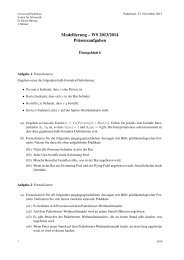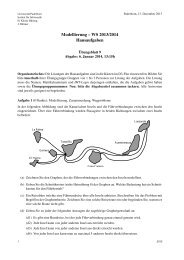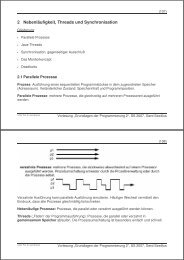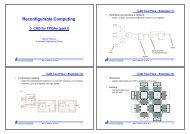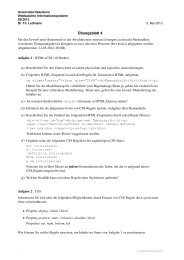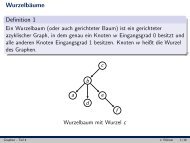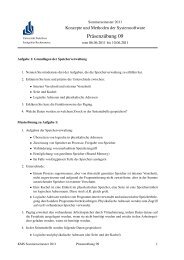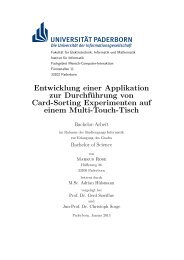User Modeling human-computer interaction
User Modeling human-computer interaction
User Modeling human-computer interaction
You also want an ePaper? Increase the reach of your titles
YUMPU automatically turns print PDFs into web optimized ePapers that Google loves.
2.2 The <strong>human</strong> factor<br />
In the <strong>interaction</strong> of <strong>human</strong>s and <strong>computer</strong>s we normally have two different views. On<br />
the one hand we have the user with his so called ”mental model” of the <strong>computer</strong> system.<br />
On the other hand we have the <strong>computer</strong> system with the ”user model” and its view of<br />
the user.<br />
Mental Model The so called ”mental model” of a user is the knowledge about the<br />
components of a system and the experience of how to use the <strong>computer</strong> system properly<br />
(see [CO88]).<br />
<strong>User</strong> Model If we want an personalized <strong>computer</strong> system we need to build a ”user<br />
model” so that the system knows the preferences, capabilities and skills of the user.<br />
If we put this two views together, we get a system that reacts in two different ways.<br />
The user can interact with the system and use it to perform his tasks, because of his<br />
knowledge about the <strong>computer</strong> system. The system ”knows” the intention and goals<br />
of the user and can adapt to the needs of him, because of the information in the user<br />
model.<br />
2.3 Information about a user<br />
As we have seen, if we want a personalized <strong>computer</strong> system that adapt to the needs of a<br />
user, we must collect some information about the user. We can divide these information<br />
into three types (see [Kob04] and [Fis01]).<br />
user data First we have the user data which is the information about the user himself,<br />
e.g. his knowledge, skills and capabilities. The interesting thing with this type of<br />
information is the intention and goal of the user when he uses a <strong>computer</strong> system.<br />
I would like to show the importance of this information by an example. If a user selects a<br />
new document in a word processor from a template to gererate a new letter, the system<br />
should infer the intention and possible goals (in this case the tasks a user wants to<br />
perform). Because normally the generation of a letter includes the lookup of an address<br />
in a personal addressbook or a public one to fill in the destination information. Another<br />
task is to print out the finished letter to put it in a cover and send it to its destination.<br />
usage data The example leads us to the second type of information that must be<br />
collected from a user – the usage data. In the example we observe the user and recognizes<br />
that he wants to write a letter. Now we can look up his usage regularities to infer that<br />
after he has looked up the destination address he wants to print out the document.<br />
environment data The last type of information that can be captured is what kind of<br />
software the user normally use, and what type of hardware is available for a user.<br />
4





